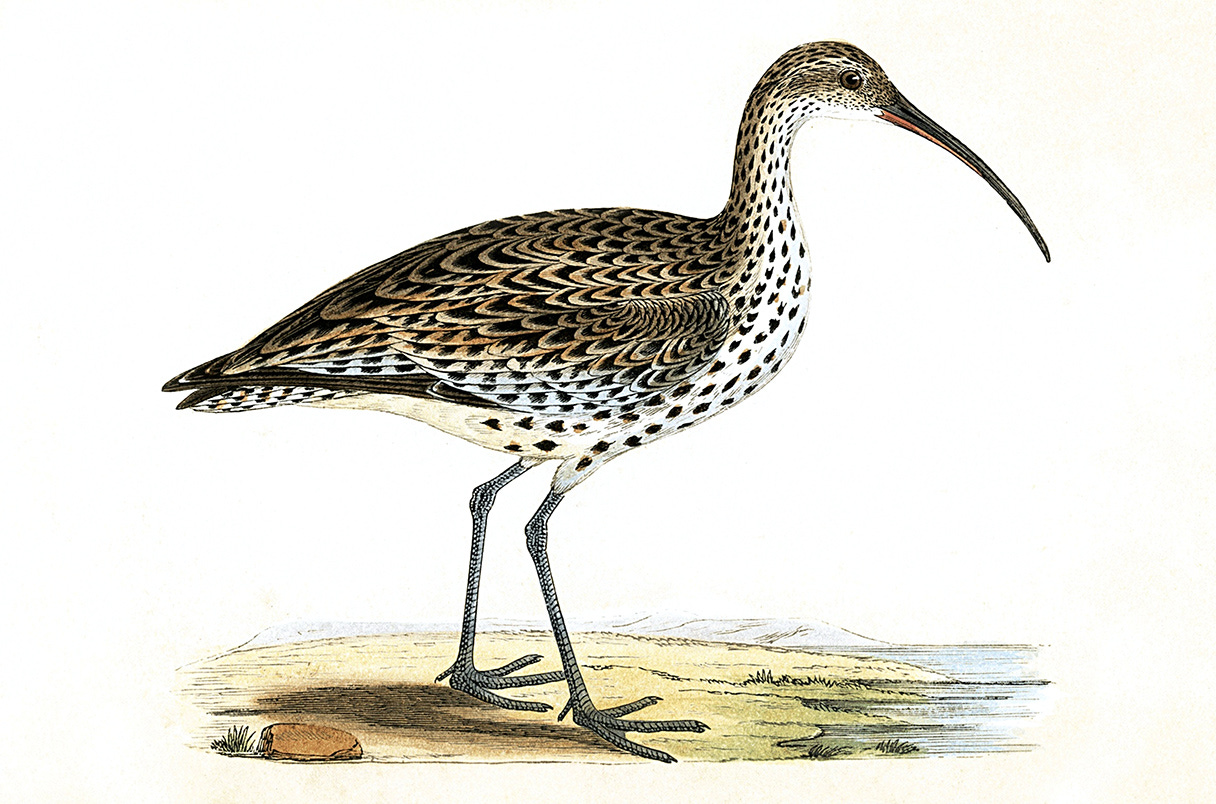1 Week, 7 Stories #52
Long extinct, recently extinct, and Gus the Emperor Penguin is heading home.
Every edition features 7 stories, from the past week. I’ll draw on my background in media, journalism, agriculture, biotech, and renewable energy to come up with an interesting selection and to offer some context.
I am working in another writing project so skipped a couple of editions to make some progress, but I am back weekly.
Might as well start with a cute kitten.
This cute little kitten was found a few years ago but as is the way of science, details are not widely shared or accepted until the scientific paper is completed, peer-reviewed, and published. That work is done and with the open access paper in Nature Scientific Reports now available, everyone knows about the 35,000 year old sabre-toothed cub found in northeastern Russia. The 3-week-old kitten was found almost perfectly preserved with its short, thick, soft, dark brown fur, whiskers, and claws intact. The unique state of preservation means it is the first time scientists have been able to create a detailed physical description of a young sabre-tooth cat. Probably better known as a saber tooth tiger, it is not related to the tiger at all, and the young kitten is a Homotherium latidens which lived 4 million to 12,000 years ago.
According to a New York Times story (link should be open, if not let me know please) it was discovered by prospectors looking for mammoth tusks when they came across the fur sticking out of a river bank in Yakutia, Russia’s largest republic. Bones of sabre-toothed cubs have been found before, but this gives paleontologists a whole new look into the animal. The director of the Borissiak Paleontological Institute at the Russian Academy of Sciences and the paper’s lead author said it was a “fantastic feeling” to see such a specimen. Even a paleontologist not part of the research team called it one of the most exciting moments of his career.
As one who is fascinated by these glimpses into our planet’s past, I think his feeling is likely justified.
One more story on extinction, but this one more tragic than exciting. The slender-billed Curlew has been declared extinct. Its habitat was an area known as the Western Palaearctic which runs from North Africa up to the polar regions. A paper in the journal Ibis says that with such an extensive range it can be difficult to determine if a species is extinct, but the authors say there is a 96% probability the wading bird is gone. Global warming has led to bogs being drained in Siberia where the curlew bred and the Mediterranean areas where it over-wintered have seen its habitat destroyed. The last verified sighting was in February of 1995.
The International Union for Conservation of Nature’s Red List of Threatened Species says more than 46,300 species are under the threat of extinction and shorebirds (such as the curlew) are high on the list. In a press release last month BirdLife International says that without collaboration across countries there will be even further losses.
In a National Post article on Tuesday, Vice-Admiral Angus Topshee, commander of the Canadian Navy, said he was “confident” Canada could stop Russian or Chinese ships from passing through the Northwest Passage. The rest of the article leaves you to believe that would be true if they simply tried to sail on through without permission – not if it was an act of aggression. Even our newest Arctic patrols ships are armed only with a single 25mm cannon which has an effective range of about 2.5 km (1.55 mi). He pointed out these ships are not “front-line” combatants.
The comments from the admiral come on the heels of reports that Russia and China have conducted their first joint operations in the Arctic. According to Stars and Stripes the drills took place in the Bering Sea where the U.S and Russia share a maritime boundary. The route is important for Russia to deliver more oil and gas to China and for China to have a more efficient route beyond its reliance on the Strait of Malacca. Russia is planning to build an Arctic emergency hub along its Norther Sea Route to support Arctic shipping and Canada’s Arctic Institute said last week that it is a significant step in Russia’s broader Arctic strategy. The region is also home to the world’s first floating nuclear plant built in 2019. It can provide power for a city of 100,000 people even though the current population of the area is only 4,230 according to High North News.
Canada remains a step behind even given the confidence of one of our top naval commanders. The Yukon Arctic Security Advisory Council recommended recently that we should be improving defence planning and capacity in the Yukon. To that end the Yukon and federal governments are investing $373,000 into a feasibility study for an Arctic security centre. That study will take 17 months with no timeline beyond that.
Two unrelated stories came together this week and as Andrea Picard said in his Globe & Mail column the “Troubling resurgence of scurvy” is not what any of us expected to see in 2024. The second story was a Canadian Press article that I had in my feed from APTN News about the runaway cost of food in remote Canadian communities. Most of them in the North and most of them First Nations. One problem feeds into the other because the rise in cases of scurvy disproportionately affects Indigenous people and people experiencing extreme poverty.
Scurvy is not a disease we generally pay attention to and when we do, we dismiss it as a condition caused by a lack of vitamin C and usually associate it with sailors making long voyages with limited supplies of fresh food. Both true, but it is making a comeback of sorts because the problem is more complex.
27 cases were diagnosed in La Ronge Saskatchewan this year.
A 65-year-old woman in Toronto was treated for scurvy in October.
Between 2016 and 2020 pediatric cases of scurvy have tripled in the U.S.
Doctors in Western Australia say it is a “re-emerging diagnosis”.
All the stories linked above end up with the same conclusion: the high cost of food leads to poor or nearly impossible food choices. When you cannot afford good quality fresh food the options are often processed and non-perishable canned food (much like those scurvy prone sailors of old). Those high prices in the North cost residents $80.00 or more per week for the same basket of groceries we buy in southern communities. The best way to avoid scurvy is to eat more fruits and vegetables which also happen to be the most expensive items in the northern food basket and the more expensive choice if you are on a limited income.
One to three months of significant vitamin C deficiency can lead to the symptoms of scurvy, but it can be brought under control in only a few days of proper diet and supplements.
It is 2024. We can do better that the 1700s when it was first linked to diet.
I spend a lot of time online researching my newsletter and the short stories I am writing. I’m not a social media fiend anymore so that doesn’t get in the way and I’m not an online shopper (much). However, that probably puts me in step or more likely ahead of adults in the United Kingdom who spend an average of 4 hours and 20 minutes online each day according to a report released this week. That’s up by an hour compared to last year. TechCrunch called it a 2-horse race with Alpha (Google, YouTube) and Meta (Facebook, Instagram) leading the pack.
The UK report showed a big chunk of that time was in the use of search engines, one in 10 users visited a dating service during the survey month (May), and 29% checked out a porn site in the survey period.
Here in Canada our estimated screen time is 6 hours and 18 minutes a day with 2 hours and 5 minutes of that devoted to social media. If you are a typical user those 6 hours or so translate to 14.46 years of your life on a mobile devices over 75 years of use according to a Media in Canada story.
Ouch.
As of February of this year, Facebook was the Canadian social media site of choice with almost 45% of our visits and LinkedIn, where many of you read this newsletter, was less than 1% of our visits. Not surprisingly much of that time is spent clutching our mobile devices and wagging our thumbs over the screen.
All of this adds up to Canadians emerging as one of the most connected countries in the world.
Our overly connected world is not likely to change despite the appearance of legislation such as the Online Safety Amendment (Social Media Minimum Age) Bill 2024 passed this week in Australia. It is a world-first legislative approach to ban the use of social media by children under 16.
However as you’ll hear in this CBC Manitoba interview, most Gen-Z users say they have grown up with it and as one young person said, “I turned out very normal”.
As a journalist I always hoped the Calgary Ring Road construction and the questions about fluoride would both be settled before I left the CBC. The Ring Road was finally completed just last year and thanks to the latest debate stirred up by Robert F. Kennedy Jr and his opposition to fluoride, that one will likely still be in flux after I am beyond caring.
The nominee to lead President elect Trump’s Department of Health and Human Services has embraced various unsubstantiated theories that fluoride lowers a child’s IQ, creates gender confusion, and is a neurotoxin.
Fluoride is a naturally occurring chemical (I had it in my well water when living in the country) that science has shown to prevent dental cavities and strengthen bones, especially in young children. The Centres for Disease Control in the United States said that water fluoridation was one of the top 10 greatest public health achievements of the 20th century. It has been added to water in Canada and the US since 1945 and in both countries the decision to fluoridate is managed locally or regionally so RFK faces some challenges in his desire to have it removed.
Roughly 39% of Canadians have access to fluoridated water which means the majority of the population does not benefit from the 25% reduction in tooth decay that has been shown to come with fluoridation. The Canadian Dental Association which arguably has something to lose if we don’t need to call on their services, came out in support of fluoridation this week.
In Calgary a plebiscite in 2021 called for fluoride to be added, but work to upgrade the water treatment equipment is only now being commissioned and the changes will not be completed until early 2025. The city has been flipping and flopping around with plebiscites in 1957, 1961, 1966, 1971, 1989, 1999, and 2021. After the ’89 plebiscite, fluoride was added to the water and then by order of the City Council was removed in 2011 so even if it happens again in 2025, it may not last.
In Montreal water fluoridation for the West Island is coming to an end which has set off public debate as the decision was made without public input. Most Quebec municipalities have stopped (or never started) the practice. In response to the Montreal decision, McGill’s Office for Science and Society has tried to put water fluoridation myths to rest, apparently with little effect.
The rise of pseudo-science as part of the coming White House mind set has already started to spill over into Canada and despite the best efforts of science and scientists, fluoride will once again become a target.
New data collected by NASA and German satellites show that we are in a long-term dry phase which makes the impact of global warming even more alarming according to a story this week in SciTech Daily. The researchers studying the data say that our global terrestrial water storage has been declining rapidly since May 2014 and has not been recovering.
Water covers 70% of the planet, but only 3% is fresh water – the stuff we need to drink, grow crops, or have a shower with. For at least one month of the year 2.7 billion people face a scarce water supply and around 1 billion face chronic water problems. By 2025 some estimates suggest that water shortages could hit two-thirds of the world’s population.
Not that you would notice if you were to visit DSRT Surf where you can enjoy surfing in the Coachella Valley160 kilometres (100 miles) inland from the California coast. Or if you happen to be in England there is The Wave, billed as Bristol’s inland surf destination. BNN Bloomberg points out that these inland water parks come with a cost to the climate, but hey, they are finding ways to reduce the impact we have been assured. Oddly, a voice of common sense comes from at least some surfers themselves. Surfrider Europe says that environmental concerns should outweigh the value of these projects which need huge quantities of water, use land for something totally alien to the area, and uses large amounts of energy. The industry group Surf Park Central seems to see the problem as only a matter of perception and leans into the argument that these surf parks are actually a “form of therapy for diverse groups of people experiencing physical, mental, neurological, and emotional challenges”. The MIT Technology Review said that “Fifty-four of the 162 parks tracked by Wave Pool Magazine that have been built or announced are in areas with high or extremely high water stress”. Meanwhile according to the article, the Coachella Valley Water District has been importing water from the Colorado River for 100 years.
Despite what comedian John Oliver called as “monumentally stupid” developments, there are 76 new surf parks on the books around the world and 2024 is on target to be a record-breaking year for new openings.
The world struggles to manage wastewater, conserve existing water supplies, and ensure clean water supplies to everyone. Yet for a mere for $125/hour you can surf in the Swiss Alps.
Enjoy.
This actually makes 8 stories, but I couldn’t miss out on giving a cheer for Gus the Emperor Penguin because he is headed home from his beach vacation. Maybe he just needed a break from all those other penguins waddling about in Antarctica, but by the time he ended up on the West Australian coast 3,000km (about 1900 miles) from home he was tired and malnourished. He was found near the town of Denmark, Australia in early November so maybe he just got his geography mixed up and thought he was headed to the cooler and quieter Danish coast. Emperor penguins can travel far afield when looking for food, but Gus had gone twice as far as his comrades would normally swim in search of fish, squid, and krill.
Penguins it seems are plucky little creatures.
In September a female penguin named Pen who was born and raised in captivity was swimming with staff from the travelling Gekidan Penters zoo in Japan but escaped from her enclosure. Not being used to life in the wild there were concerns about Pen’s survival. She was found 2 weeks later and her droppings indicated she had been able to catch live fish and crabs even though she had never had the opportunity to learn the fine art of foraging.
In 2012 a young penguin made its way to New Zealand but on that occasion wildlife officials said they would let “nature take its course”. A penguin nicknamed Pingu had a little more luck in 2021 when it was found on another New Zealand beach and was taken into care by Christchurch Penguin Rehabilitation. Once nursed back to health after its long journey it was released back into the ocean.
Gus got a free ride part way back to his home territory before being set free. He faces a long swim back, so fingers crossed he completes the trip so he can share stories of his exploits in sunny Australia.
Read, comment, subscribe, and share this newsletter.
I’m available for contract and freelance work with not-for-profits and charities. With 40 years of experience behind me and lots of time ahead of me, I’m here to help you make a difference in your media relations, public relations, and general communications needs.




